PowerPoint 2010
Arranging Objects
Ordering and rotating objects
In addition to aligning and grouping objects, PowerPoint gives you the ability to arrange objects in a specific order. Ordering is important when two or more objects overlap, as it will determine which objects are in the front or the back.
To change the ordering by one level:
- Select an object. The Format tab will appear.
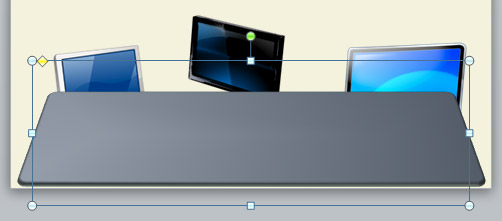 The selected object
The selected object - From the Format tab, click the Bring Forward or Send Backward command to change the object's ordering by one level. If the object overlaps with more than one other object, you may need to click the command several times to achieve the desired ordering.
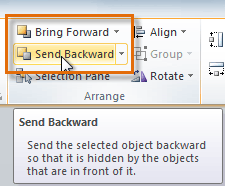 Sending an object backward
Sending an object backward - The objects will reorder themselves.
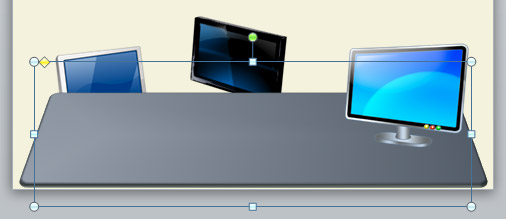 The reordered objects
The reordered objects
To bring an object to the front or back:
If you want to move an object behind or in front of several objects, it's usually faster to bring it to front or send it to back rather than clicking the ordering commands multiple times.
- Select an object. The Format tab will appear.
- From the Format tab, click the Bring Forward or Send Backward drop-down box.
- From the drop-down menu, select Bring to Front or Send to Back.
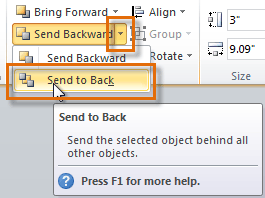 Sending an object to the back
Sending an object to the back - The objects will reorder themselves.
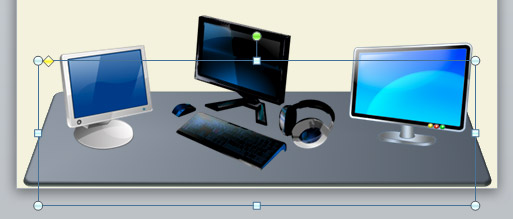 The reordered objects
The reordered objects
To rotate an object:
- Select an object. The Format tab will appear.
- From the Format tab, click the Rotate command. A drop-down menu will appear.
- Select the desired rotation option.
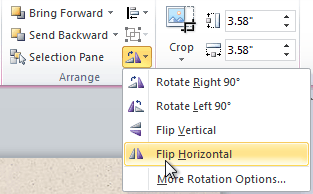 Selecting a rotation option
Selecting a rotation option - The object in the slide will rotate.
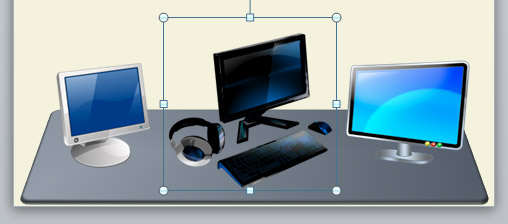 The rotated image
The rotated image






